Copenhagen-based DEVE Architectswere one of the winners of theEuropan 10 Architecture competition. Their project was a revitalization of an industrial harbor area in Augustenborg, Denmark.
Their proposal primarily addresses the historical and spatial implications of building in the small city, but there are significant environmental considerations as well. The encompassing municipality of Sønderborg envisions a carbon neutral ‘Kommune’ by the year 2030, and they hope they’ll get the opportunity to contribute to that goal.
Architect’s description and more images after the break.
How can Augustenborg revitalize the local connection to its unique natural environment while asserting itself as a significant cultural node within the region?
With its rich history and beautiful natural landscape, Augustenborg has the potential to play an important role in the further growth and development of Als.
The city lies at an important point along the main traffic artery connecting the ferry terminal at Fynshavn across the island, and benefits from a close proximity to thriving Sønderborg. This relationship to Sønderborg, as well as its location compared to other Als cities puts Augustenborg in a unique position to be a significant node within the middle of the island. The existing natural landscape, which includes dense forests and the scenic Augustenborg fjord, also contributes to the city’s unique character.
The predominant social characteristic of modern Augustenborg, is the yacht culture which has developed due to the ideal sailing environment in the fjord. Historically, Augustenborg Palace was the driving force behind the growth and development of the city of Augustenborg, and it remains a prominent building and even place of employment in the region. The industrial facilities which currently define the harbor once played a more important role in the economy of Augustenborg, however the scale and use of those structures are now the primary barrier between the residents and the water that has such a profound influence on the culture in the city. While the large structures are particularly imposing, that physical presence has left an indelible mark on the city that is an important aspect of Augustenborg.
By preserving some of the existing industrial structures, and infusing them with some of the cultural relevance of a castle, it is possible to create a vibrant new extension of the city. Historic Augustenborg Palace initially dictated the shape and growth of Augustenborg, but now a Modern Castle is required to establish a true city center in Augustenborg that can serve the entire region’s cultural and technological needs. The new city center will seize the waterfront from industry and provide more intimate moments of interaction for all people within the natural environment.
Cultural Epoch
Augustenborg Palace shaped the growth of the city with its symmetry and axes. The industrial facilities currently define the city’s relationship to the fjord. By concentrating new and upgraded cultural institutions within the existing industrial infrastructure, the repurposed buildings can assume the gravity of a medieval castle in order to influence Augustenborg’s morphology. The new cultural node then serves as a physical city center that also establishes a strong relationship with the water.
Medieval city in the Landscape
Construction on the marina side is to be kept low and green in order to preserve the continuity of the distant landscape. The city side of the harbor is built into a dense urban core, inspired by medieval walled cities. The buildings create a perimeter around a variety of connected public spaces with the exposed grid structure acting as the gate.
Promenade as a Social Spine
The public plazas of the medieval city maintain a link to Augustenborg Palace and connect the path across the embankment to the different utility spaces and a nature path on the marina side. The two different uses are defined individually by wood and concrete and collide at a harbor bath located on the embankment.
Connecting views
The views of the adjacent housing is kept undisturbed by the new structure. Lines from the southern piers penetrate the cityplan and establishe a strong visual connection between the two sides, ‘knitting’ them togerher.
Infrastructure
The new area is built as a pedestrian-oriented environment, with cars kept in the background. Parking is located in the dark areas of the plan which are otherwise unused. Pedestrians and bikers can thereby roam free, establishing a vibrant and friendly city.
Environmental Plans
The two sides of the fjord utilize their contrasting natures to harvest energy in complimentary ways, and the embankment acts as a conduit for the transfer of energy between them. On the marina side, the open landscape is farmed for energy using ground source heat pumps, windmills, and biogas. The urban side uses the roofscapes to harvest solar energy and kinetic plates in the parking area to generate energy.

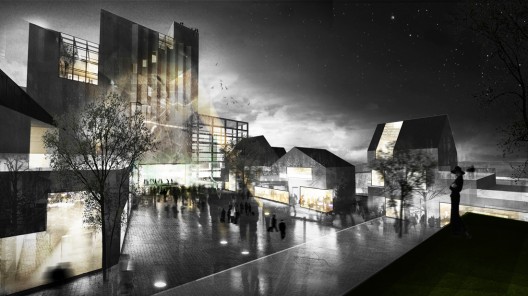
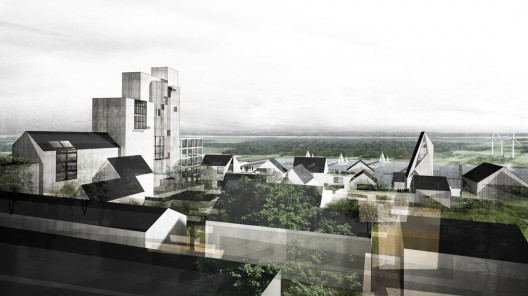
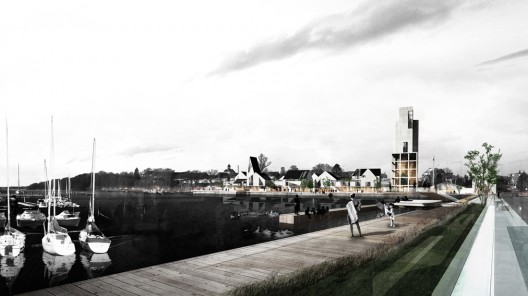
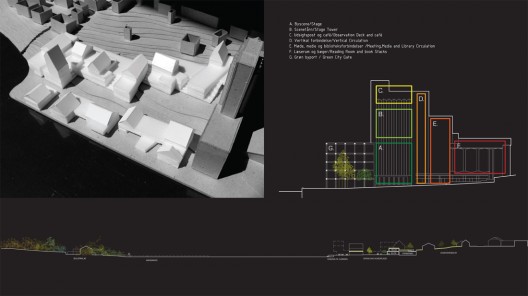
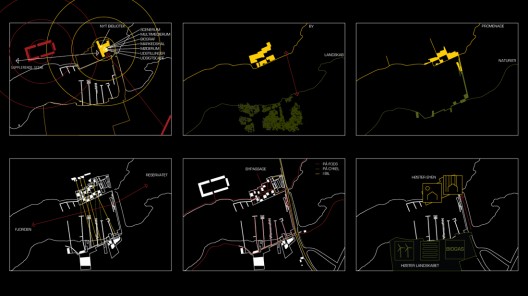
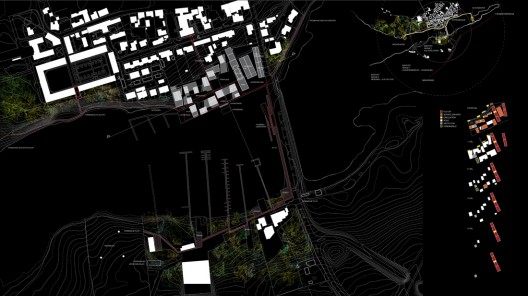
No hay comentarios:
Publicar un comentario